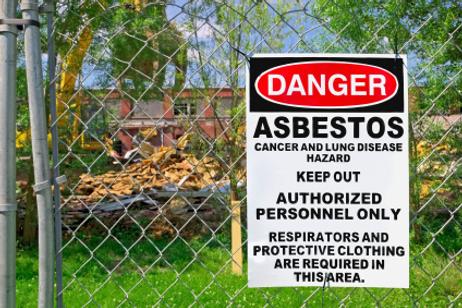Most parents send their children to school each day under the assumption that the campus is a safe environment for all of their students. If a risk is detected, parents generally believe that school officials will do whatever necessary to eliminate the risk before allowing children to return to the scene.
However, some public schools across the country have found dangers lurking within school walls, but have not quickly or efficiently addressed these toxins. This concern particularly applies to dangers lurking within walls quite literally, as well as floor and ceiling tiles. The danger in question here is asbestos exposure.
In this video, The Mesothelioma Center explains how many of America’s students, teachers and school staff are at danger of asbestos exposure because the deadly carcinogen lurks behind walls, above ceilings and under floors in older schools across the United States.
What is Asbestos?
According to the U.S. Environmental Protection Agency, or EPA, asbestos is a naturally occurring mineral fiber that was once commonly used in the construction of buildings. Asbestos was previously a desirable material because of its ability to insulate buildings efficiently and its relative resistance to fire.
Asbestos was widely used throughout much of the last century until health officials found a link between asbestos and some types of diseases in the 1970s. At that time, much asbestos was removed from buildings, although walls, ceilings, and floors were often left intact if they were in good condition since this posed a lesser health risk than stirring up the asbestos fibers during the removal process.
Asbestos exposure has been found to cause a specialized type of cancer, known as mesothelioma, which can affect the lungs, heart, stomach, or colon. Mesothelioma is caused by asbestos fibers getting into the body through inhalation or ingestion. The disease can lie dormant in the body for many decades, but once it becomes active, it is untreatable and highly fatal. Most people who receive a mesothelioma diagnosis have a life expectancy of just 12 to 18 months from their diagnosis.
In this video from Good Morning America, a teacher in Philadelphia speaks out about the danger of asbestos in schools as she battles cancer.
Protecting Kids
Because many schools built during the last century contain some level of asbestos, the EPA has issued guidelines to ensure the safety of students and staff in schools. These guidelines include:
- Inspections every three years of asbestos-containing material
- Development of an asbestos management plan by the school
- Yearly notification to parents, students, and staff of the asbestos management plan
- Periodic surveillance of asbestos-containing material
- Training for custodial staff on asbestos management procedures
Despite these concrete guidelines for dealing with asbestos in schools, there have been recent reports of asbestos exposure that have parents concerned about the safety of their kids.
Asbestos in Public Schools in Virginia Beach
Virginia Beach public schools have reported asbestos findings in seven of their area schools, according to a report on a mesothelioma website. While the asbestos finding is not surprising, considering the age of the school buildings, the buildings were tested to determine whether levels of asbestos were considered "safe" by federal standards. School officials will continue to monitor the asbestos regularly, and they will notify parents of the situation twice a year via newsletter, in accordance with district policy.
St. Helena's Asbestos
This Florida parish has more problems in their school than mere asbestos exposure, according to a report on 2theAdvocate. In addition to finding asbestos in some building, the State Fire Marshall has given the school district a deadline for repairing fire alarms and faulty wiring that pose a danger to students and staff.
The superintendent of parish schools, Daisy Slan, has made a request for classroom modules to provide a safe environment for students returning to school this fall. However, Slan is doubtful she can meet the deadline, leaving schools scrambling to provide a safe place for students to learn.
Asbestos Plaguing Berkeley School District
In Berkeley, California, the asbestos problem has reached significant proportions for one elementary school in the district, according to an article in the Berkeley Daily Planet. Washington Elementary School had students taking band and cooking classes in a classroom with exposed asbestos caused by cracked floor tiles.
At the prompting of one of the school's teachers, the school finally came under scrutiny by the California Division of Occupational Safety and Health (CalOSHA), which closed down the classroom in question until appropriate action could be taken.
This video posits how asbestos in schools may put children and teachers at risk for mesothelioma.
Toledo Toying with Asbestos
The Toledo Public Schools are facing a hefty bill for asbestos cleanup after roof repairs caused a significant amount of the dangerous fibers to drop to the floor of the Old West End's Academy ceiling. According to a report at the Mesothelioma and Asbestos Awareness Center, the building was evacuated once the problem was detected. Work on the roof was also halted until the asbestos could be safely removed.
Asbestos is a common problem in older buildings, but guidelines are in place to ensure safe cleanup of the material when necessary. If you are concerned about asbestos in your neighborhood schools, contact the school administration or visit the EPA website for more information.
Questions? Contact us on Facebook. @publicschoolreview












